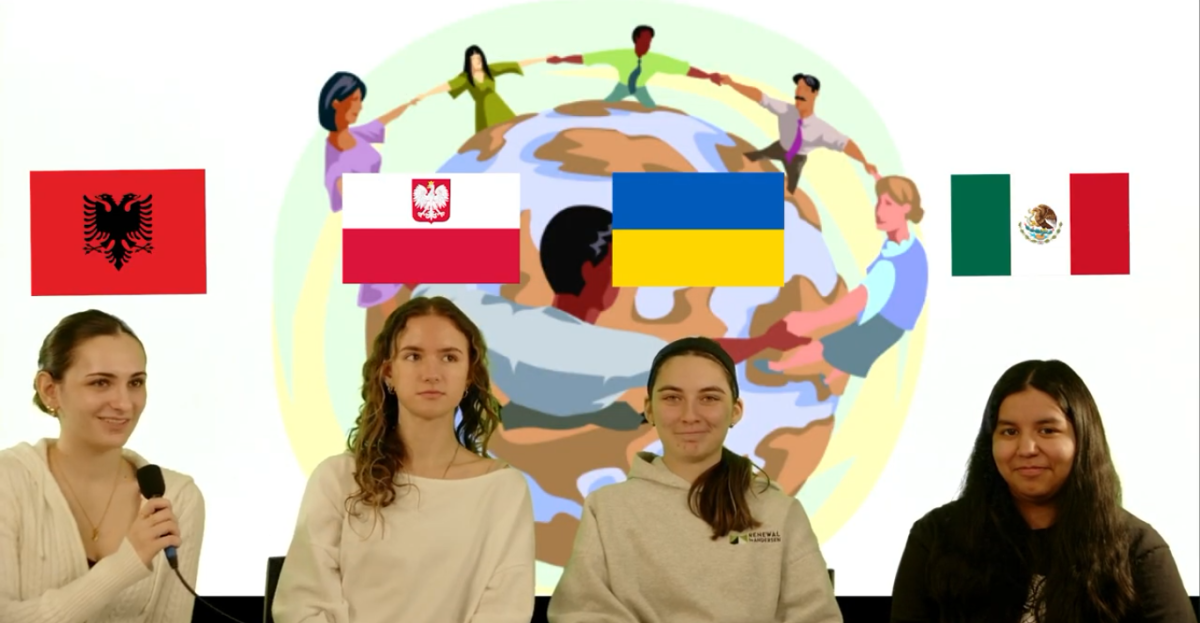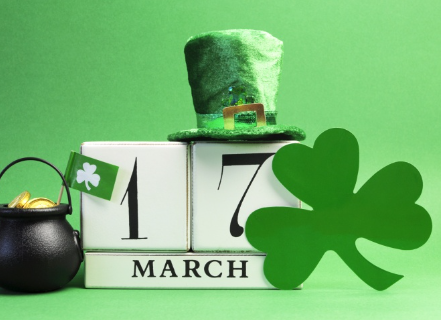
St. Patrick’s Day is an Irish holiday that celebrates Irish culture, ranging from folklore about leprechauns and their pots of gold, to the iconic wearing of green on the famous holiday. However, some may not know that the origins of this beloved holiday stemmed from the religious accomplishments of the Patron Saint of Ireland.
Who was Saint Patrick?
Most of the information people know about Saint Patrick came directly from his written confession, St. Patrick’s Confessio. Patrick’s birth name is Maewyn Succat and despite popular belief, he was not born in Ireland. He was born in Roman Britain, which was a part of Great Britain that was under the rule of the Roman Empire. Maewyn was also born into a very wealthy family. His family was known to be religious, his father being a deacon at this time, but at a young age Maewyn wasn’t as devoted to religion compared to his relatives.
Newfound Faith
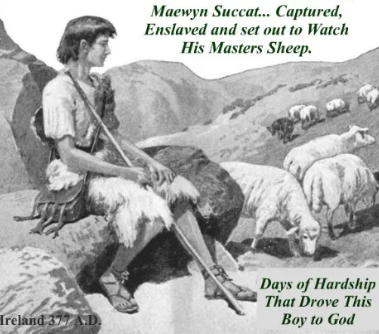 It has been known by many historians that Irish raiders were regularly raiding and stealing from Eastern Britain during the 5th century, specifically from 300 AD to 400 AD. When Maewyn was about 14 to 16, his father’s estate was raided by Irish pirates. They took many valuables and in the end, captured Maewyn. He was later taken to Ireland and was sold into slavery, working as a shepherd under an Irish chieftain. He was deprived of food and clothes and lived in almost complete isolation with only the cattle to keep him company. In his confession, he wrote that he felt he deserved the cruel treatment given to him because of his lack of belief and dedication to God and His heavenly angels. It was also during his enslavement that Maewyn started becoming religious. He began to pray 100 times during the day and 100 times at night. There is some ambiguity as to why Maewyn turned to religion during this time. Some historians believed that he picked up religious teachings from his slave owner, some say that there was a monastery nearby that he would occasionally sneak into, and others simply believed that it was a form of escapism for Maewyn during his enslavement.
It has been known by many historians that Irish raiders were regularly raiding and stealing from Eastern Britain during the 5th century, specifically from 300 AD to 400 AD. When Maewyn was about 14 to 16, his father’s estate was raided by Irish pirates. They took many valuables and in the end, captured Maewyn. He was later taken to Ireland and was sold into slavery, working as a shepherd under an Irish chieftain. He was deprived of food and clothes and lived in almost complete isolation with only the cattle to keep him company. In his confession, he wrote that he felt he deserved the cruel treatment given to him because of his lack of belief and dedication to God and His heavenly angels. It was also during his enslavement that Maewyn started becoming religious. He began to pray 100 times during the day and 100 times at night. There is some ambiguity as to why Maewyn turned to religion during this time. Some historians believed that he picked up religious teachings from his slave owner, some say that there was a monastery nearby that he would occasionally sneak into, and others simply believed that it was a form of escapism for Maewyn during his enslavement.
Maewyn was enslaved for six years before he was approached by someone in his dreams. A voice spoke to him, one he believed to either be God or a heavenly angel, and praised him for his devotion over the years. The voice told him to leave now and to head to the ocean coast, it was then that Maewyn decided to follow the voice’s guidance and flee from the land. He traveled approximately 200 miles before he finally saw the ocean on the horizon. Once close enough to the coast, he stumbled upon sailors who have volunteered to take him back home to Britain. It took three days to reach Britain, but once on foot, it took Maewyn two to three years before he finally was reunited with his family.
Details about his escape are all documented in his confession and confirms all the events that happened that night, but some historians are skeptical about Maewyn’s suspicious, coincidental escape.
A Heavenly Call
The night that Maewyn was able to reunite with his family, he had another strange dream. In this dream, he was approached by Saint Victoricus, a Christian martyr who died in the early 4th century, and told Maewyn that he wanted him to become like him and the other saints. The saint then handed him a letter, and on it he read the pleas of the people back in Ireland. While reading, Maewyn claimed to have heard another voice call out, “We beg you holy boy, to come and walk again among us”(Patrick). He woke up immediately after. The following day, Maewyn set out to France to further his knowledge on Christianity. Once there, he was under the teachings of Saint Germanus, otherwise known as Germain, who was the Bishop of Auxerre. He studied under Germain for approximately 15 years and it was during this time when Germain gave Maewyn the name Patricius, or Patrick. He was eventually ordained as a priest and missionary and soon after, he traveled back to Ireland, determined to teach others what he had learned. Once he arrived, he immediately began taking students who were willing to learn and he was able to convert many Irish people.
Integration of Religion and Tradition

Usually in history, whenever religion was taught it would typically overwrite native traditions. However, Patrick had decided to incorporate Irish tradition into his teachings. The Irish were used to celebrating and honoring their Gods with fire, so when Easter came around, Patrick used a bonfire to celebrate the holiday. He used the sun in a lot of his teachings as well, as the sun was a powerful symbol for the Irish people. He superimposed the cross onto the sun to make it more familiar to them. This soon turned into what we now know as the Celtic Cross. It was also said that while Patrick was trying to convert the Irish into Christians, he used a shamrock to explain the Holy Trinity with each leaf representing Father, Son, and Holy Spirit. The three leaves also represent faith, love, and hope. In the four leaf clovers, the fourth leaf represents luck and the notion that four leaf clovers are lucky is still a widely spread superstition today.
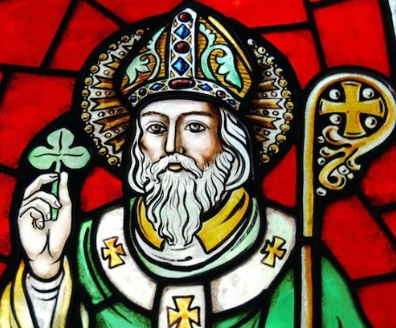
Patrick spread his teachings for about 40 years, converting many people throughout the land. Patrick even contributed to building the first Church in Ireland. Some time during his stay there, he was ordained as a bishop by Pope Celestine and later acquired many disciples soon afterward. Surprisingly enough, Patrick was never a saint nor was he recognized as one while he was alive. He was only recognized as The Saint Of Ireland after his death, estimated to have happened either in year 461 AD or 465 AD. The exact day of his death is widely believed to be March 17th, which is when the holiday St. Patrick’s Day is celebrated.
How St. Patrick’s Day came to be:
From the 5th century all the way up to the early 19th century, St. Patrick’s Day was known as a religious holiday, celebrating how he had spread Christianity rapidly throughout Ireland. However, the meaning of the holiday began to change in the 1760’s, when Irish soldiers from the British Army started coming to America. The first St. Patrick’s Day Parade took place in 1762 in New York City, the main cause being the sudden increase in Irish immigrants that were coming into the US and how they wanted to celebrate their heritage. This is also the first time the holiday was brought to and celebrated in America.
The Irish Rebellion
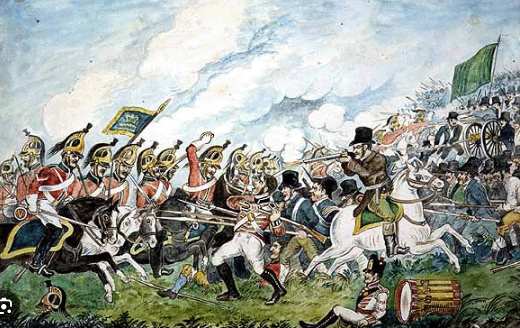
During the 18th century, Britain had colonized all of Ireland and had total control over the land. But in the mid to late 1700’s, the Irish subtly began to fight back against the British Empire to regain their independence from them. Inspired by the American Revolution in 1768 and the French Revolution in 1789, Ireland soon started to plan their own rebellion. In 1791, The United Society of Irishmen was formed to organize a plan to gain their independence from the British Empire. The Society of Irishmen quickly started to gain traction as Irishmen from all different backgrounds began to join. Those who were a part of the group or supported their cause wore green, as that was the color the Society of Irishmen had chosen to represent them. In 1798, they launched a full-fledged revolt against British rule, officially starting the Irish Revolution. The revolution started in May and ended in September that same year. The war was severely one-sided and unfortunately ended with the Irish being unsuccessful in their attempt to overthrow British rule. Afterward, the British began to double-down on the laws and restrictions in Ireland, even going as far as to ban certain Irish traditions. The British also prohibited anyone from wearing green. Anyone who was seen wearing green would have been seen as a potential ally to the Society of Irishmen and would be arrested or executed. This ban inspired a poem called “Wearing of the Green” which talks about the repression of people who supported the Irish Rebellion. This history is also why people tend to wear green on St. Patrick’s Day; to show support towards Ireland and their fight towards independence.
Conclusion
In early celebrations, St Patrick’s Day was always known as a religious holiday, to recognize Patrick’s achievements in spreading Christianity. But for the past 200 to 300 years, St. Patrick’s Day became something more than that. It became a day to not only celebrate Irish traditions and beliefs, but to also commemorate the hardships and obstacles that Ireland had went through.
Work Cited:
Facts about st. patrick (2023) St. Patrick’s Catholic Voluntary Academy. Available at: https://www.st-patricks.leicester.sch.uk/our-school/facts-about-st-patrick/ (Accessed: 18 March 2024).
Klein, C. (2019) St Patrick: Kidnapped by pirates and enslaved at 16, History.com. Available at: https://www.history.com/news/st-patrick-slavery-pirate-kidnapping-real-facts (Accessed: 18 March 2024).
(No date) The death of St. Patrick, the apostle of ireland. at the monastery … Available at: https://www.loc.gov/resource/pga.08574/ (Accessed: 18 March 2024).
Succat, M. (no date) Confession: St. patrick’s Confessio, Confession | St. Patrick’s Confessio. Available at: https://www.confessio.ie/etexts/confessio_english# (Accessed: 18 March 2024).
The origins of St. Patrick’s day (no date) Georgia Public Broadcasting. Available at: https://www.gpb.org/education/origins-of-st-patricks-day (Accessed: 18 March 2024).
Who was st. patrick? – celebratation, Ireland, Catholic (2009) History.com. Available at: https://www.history.com/topics/st-patricks-day/who-was-saint-patrick (Accessed: 18 March 2024).
















